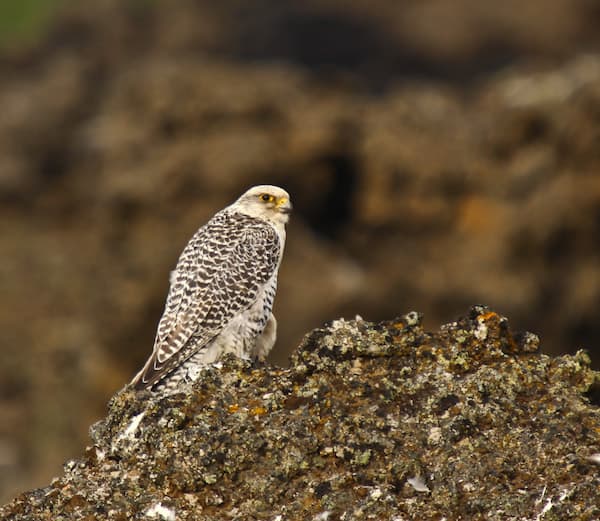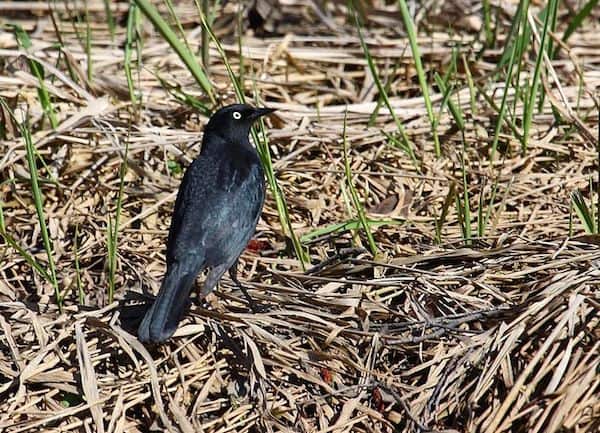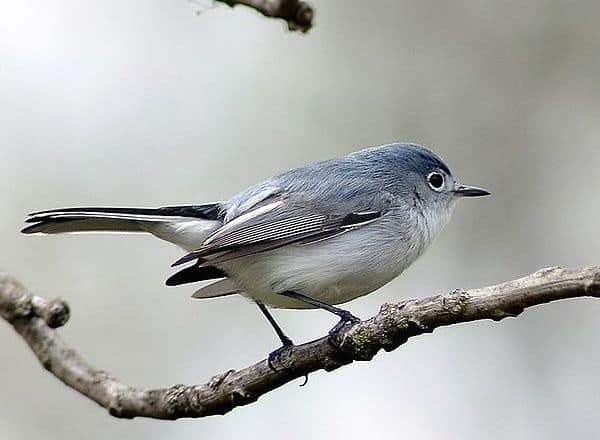Look For
At 22 inches in length and with a wingspan of 47 inches, gyrfalcon is the largest falcon. It is sexually dimorphic not by color but by size, with males weighing about two-thirds as much as females. Its color and plumage pattern is highly variable, ranging from nearly pure white to dark brownish gray, with intermediate gray gyrfalcons most common in North America. The underparts of adults are barred horizontally toward the back and spotted toward the front; immatures have vertical streaking below, and are more heavily marked. Pale gyrfalcons have dark scallop markings above, while dark gyrfalcons can appear to be solidly dark above. Its size and weak facial pattern distinguish it from peregrine and prairie falcons.
Listen For
Its call is similar to other large falcons, a guttural kak kak kak, with females having a lower pitch. Other vocalizations, most commonly used during breeding season, include a single chup, a stuttering chu-chu-chu, and an almost continuous chichichichitter.
Find It
Gyrfalcons breed in Alaska and northern Canada as well as in Arctic areas of northern Europe and Asia. Some gyrfalcons are nonmigratory, while others head south for the coldest months. In North America, it is a regular but uncommon winter visitor in the northern states, where it prefers open areas with abundant prey, including seacoasts, lakes, agricultural areas, grasslands, rangeland, and even northerly cities and towns with feral pigeon colonies. Look for them perched not only on cliffs or tall buildings, but also on the ground.
Feeding Behavior
A ptarmigan specialist, the gyrfalcon also takes birds ranging in size from songbirds to geese, as well as some mammals such as voles, lemmings, and hares. It can hunt high and stoop, but often approaches its prey fast and low to the ground. It can pursue birds to exhaustion over long distances, but usually strikes and knocks its prey to the ground rather than grabbing it in air. It usually makes its kill on the ground or after a short stoop.
Nesting Behavior
Gyrfalcons are believed to be monogamous until a mate’s death. Pair formation begins between February and April. Courtship displays are performed while perched at the nest site, or in flight. Aerial displays include rolls during dives, 90-degree turns, a male “floating” above a female, and food transfers, both in flight and at the nest site. It nests on cliffs or ledges in the high Arctic, often using nests of other species, including raven and golden eagle. Male and female scrape a hollow depression in the sticks or other substrate, but there is no other nest construction. Three or four eggs, ranging from white to reddish brown, sometimes with cinnamon spots, are laid in May or early June. Both male and female incubate for about 35 days. Fledging occurs 45 to 50 days later, and young are dependent upon their parents for four to six weeks.
Wow!
With wider wings than the other large falcons, it is less streamlined and maneuverable, and more buoyant in flight. It is adept at sustained pursuit of prey, but is more agile on the ground than other falcons, even running after prey.




